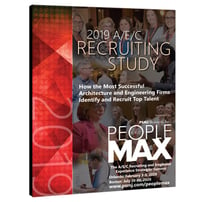
The conventional wisdom is that “poaching” (hiring employees away from other architecture and engineering firms) should not be an acceptable method of finding design talent. Most often, opponents argue that it is simply a question of ethics.
However, this argument begs the question: If a good employee has a better opportunity for career advancement in your firm than in the firm he or she is currently working, is it ethical to withhold knowledge of that opportunity from him or her? If your competitor does a poor job of challenging or compensating their employees, is it ethical to reward that behavior by allowing them to hang onto their people because no other firm will recruit them? The answer is “no” to both questions.
The question of pay
There is another common argument that believes employee poaching hurts our industry. The argument complains that poaching simply raises pay rates and salary costs for all firms, thus hurting their competitiveness. Let’s examine this assumption to see if it holds water.
We have seen a steady reduction in the percentage of college students who go into engineering fields. In fact, over the past 20 years, the actual number of engineering and architectural graduates from U.S. universities has actually declined by about 15 percent.
There is no doubt this trend hurts our economy and our profession, and has been caused by our industry’s unwillingness to raise salaries by more than the cost of living. This unwillingness to raise salaries allows A/E firms to continue their practice of underpricing their services and still make enough profits to stay in business.
If employee poaching caused all salaries to rise, fees would also rise because most firms set prices based on a target multiplier on direct labor. In most industries, this increase in rates would result in a reduction on demand. However, because A/E services comprise less than one percent of most projects’ life cycle costs, the demand for services wouldn’t change much if our prices rose (economists call this an “inelastic demand”). The only difference would be that our people would actually be paid more.
Recent data Meanwhile, PSMJ has gathered data on this subject. In the 2019 A/E/C Recruiting Study: How the Most Successful Architecture and Engineering Firms Identify and Recruit Top Talent more than half (51.7 percent) of participants say that their internal recruiters call on employees at other firms. Moreover, almost three quarters (73.3 percent) of those firms that say that their internal recruiters call on employees at other firms find it ethical to do so.
Meanwhile, PSMJ has gathered data on this subject. In the 2019 A/E/C Recruiting Study: How the Most Successful Architecture and Engineering Firms Identify and Recruit Top Talent more than half (51.7 percent) of participants say that their internal recruiters call on employees at other firms. Moreover, almost three quarters (73.3 percent) of those firms that say that their internal recruiters call on employees at other firms find it ethical to do so.
Bottom line
If poaching became more prevalent (which it is), we might actually encourage more bright young people to go into the design professions (though probably not in time to compensate for the upcoming mass of baby boomer retirements).
 The 2019 A/E/C Recruiting Study: How the Most Successful Architecture and Engineering Firms Identify and Recruit Top Talent , a complimentary 50-page study presented by A/E/C PeopleMAX, reports the results of PSMJ's 2019 survey of architecture and engineering firm practices. Packed with participant comments and rich analysis of tactic effectiveness, this is the most comprehensive research of its kind ever conducted. You also get a comparison of this year’s results with similar recruiting studies done in 2017 and 2013, plus data on what recruiting practices respondents believe are the most effective, as well as how effective firms feel their recruiting program is overall.
The 2019 A/E/C Recruiting Study: How the Most Successful Architecture and Engineering Firms Identify and Recruit Top Talent , a complimentary 50-page study presented by A/E/C PeopleMAX, reports the results of PSMJ's 2019 survey of architecture and engineering firm practices. Packed with participant comments and rich analysis of tactic effectiveness, this is the most comprehensive research of its kind ever conducted. You also get a comparison of this year’s results with similar recruiting studies done in 2017 and 2013, plus data on what recruiting practices respondents believe are the most effective, as well as how effective firms feel their recruiting program is overall.
A/E/C PeopleMAX, the recruiting and employee experience strategies summit is coming to Orlando, February 3-5, 2020 and to Boston on July 20-22, 2020.



